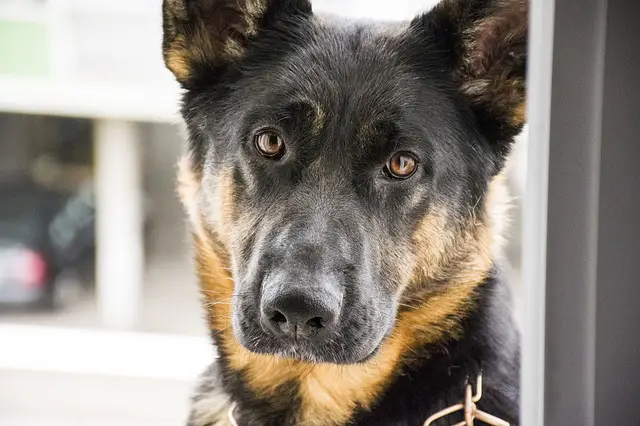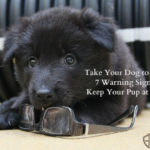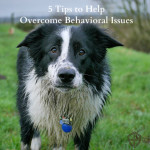Tail-Wagging Arsonist: Tips to Prevent a House Fire
Could Your Herding Breed Dog Start a House Fire?

Your first alert is a high-pitched, electronic screeching. Then, you realize the air is hazy and thick, and it seems so strangely hot in the house. Your lungs are dry and burning. That’s when you see it - tongues of flame licking up your wall. A house fire!
It’s one of those horrible disasters that everyone hopes they never have to face. In 2013, there were 369,500 house fires. But did you know that about 700 of those were caused by animals?
The National Fire Protection Agency (NFPA) collects hundreds of details about the causes and results of fires. According to their report, during the five-year period from 2009 - 2013, there was an average of 700 house fires per year in which animals contributed to the fire’s start.
Now, this data includes both pets and wildlife. Taking into account the total house fires in 2013, this means that only about 0.2% of home fires were caused by animals - even less were caused by family pets. However, it is possible for pets, including the intelligent breeds, to cause home fires. For instance, watch what happens when this enterprising Labrador tries to sneak some pizza: Video: Dog Attempts to Set House on Fire
In this case, the owners were fortunate enough to catch the fire before any harm was done. However, it illustrates what could happen - and what has already happened - to other dogs and homes. As owners of very brilliant, yet very curious pups, it’s crucial to keep in mind what can happen when our backs are turned.
How to Reduce the Risk of Your Herding Breed Dog Starting a Fire
I spoke with Judy Comoletti, Division Manager for Public Education of the National Fire Protection Agency. She gave me some tips to share for National Pet Fire Safety Day, to ensure your home doesn’t end up as a statistic in which a beloved family pet accidentally caused a fire.
-Keep flammable items and tasty food away from the stove
Much like the dog above showed us, there’s a real danger in having something to tempt our big pups to place their paws against the stove knob. Judy says to keep flammable items like cereal and pizza boxes away from the stove entirely, so it can’t be knocked over onto the stovetop and cause a fire hazard. Also make sure you don’t leave any delicious morsels on or near the stove, so there’s nothing to tempt your pup to bounce up and have a look.
-Don’t leave lit candles at tail-wagging-height
For herding dogs, candles up high and out of reach aren’t much of a problem. However, make sure you keep them well above that key area where your happy dog’s tail likes to swoosh. Knocking candles to the floor can easily start a home fire. So if you must have that lovely ambiance down low, try getting battery-powered candles.
-Do not leave space heaters unattended while on
There’s a reason the instructions on your space heater say “keep upright at all times”. But your dog doesn’t know that, and with their energy and bounce it’s easy for them to accidentally knock it over. Such as in this case when a dog in Idaho caused $10,000 in damages by knocking over a space heater. So make sure you either turn off your space heater when you’re not around, or ensure your dog is never around it when you can’t supervise.
-Keep lamps out of your dog’s path
Knocking over an electrical item is a pretty common theme for dogs starting house fires. Make sure none of your lamps are in your dog’s typical play areas, or walking paths. With our dog’s powerful tails and often large size, even big lamps could be flattened by accident.
-Keep an eye on chewers to make sure they aren’t tasting electrical cords
Of course you wouldn’t let your dog chew on cords if you caught them, but if you have a chewer, be extra vigilant to ensure they aren’t messing with electrical cords. If you do catch your dog causing damage to cords, immediately replace the cord or call your electrical company to have them fix it for you. If it continues to be a problem, you might want to take steps to protect the cords by encasing them in covers or pinning them against the wall.
-Keep your herding dog confined or outside when you can’t supervise
This is the good ‘ol fix-all for every potential problem. As obvious as it is, it’s the one thing you can do to completely ensure that your dog doesn’t start a fire while you’re gone. Whether in a crate, in a dog-proofed room, or outside in the yard, keeping your dog in a safe environment cuts out the risk factor entirely.
For Dog-Sparked Home Fires, Prevention is Mostly
Common Sense and Responsible Dog Ownership
The good news is, out of the 700 fires begun by animals, most of them appear to have been completely avoidable through simple, responsible prevention measures. In fact, it’s possible you’re already doing most of what the NFPA suggests!
It’s good to be aware that your smart, energetic herding breed dog has the potential to cause a home fire. However, with a few simple and mindful gestures, you can be confident that your home won’t be one of those unlucky 700.
Extra Fire Safety Tips & Precautions
- Make sure your house is fully equipped with smoke and carbon monoxide detectors. Replace the batteries twice a year. According to Consumer Reports you should replace detectors at least every 10 years as the sensors become less effective over time.
- Have an emergency plan. Involve ALL members of your family – including pets. Then rehearse your plan every year. The National Fire Protection Association has a free emergency planning guide with a grid to map out your escape route.
- Have an updated emergency kit. Makes sure the needs of all family members (human and pet) are included. Things to think about for your pet’s needs include: A leash or harness, water, a blanket or bed, a week’s supply of food, a toy or something to chew on, poop bags, and any medications needed, as well as a copy of their medical records. Kits should be stored in a place that you can easily reach during a quick exit from the home. Make sure the retrieval of your kit is part of your emergency plan. You can download our free emergency preparedness kit here.
- Keep the phone number and address of your nearest emergency animal hospital in your phone. Also, have a current photo of your pet – just in case you get separated from them.
- Pick up a pet alert sticker for your front door. These help inform rescuers and first responders that pets are in the home. ASPCA has a free sticker you can order. And please make sure to remove it when you move. It's not ideal that it remain on a door or window of a home that no longer has pets.
("Extra Fire Safety Tips & Precautions" has been added to this article from Preventive Vet.)
Article By:
Afton Jones
The Moxie Writer






